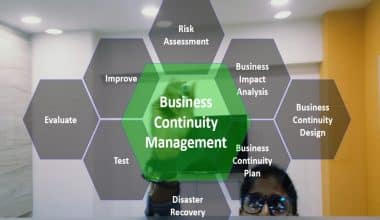In any business setting, whether you run a single storefront or a conglomerate, there is always a lot to do by considering software management systems. It could be difficult to keep things organized when there are so many demands on your time. For this reason, it is prudent for companies to implement a software management system. Furthermore, team leaders typically oversee multiple projects at once. They check in to make sure everything is running smoothly and on track. Nevertheless, handling multiple projects independently requires a lot of time and effort. It’s easy for things to get out of hand when you have a lot to keep track of. That’s why they ought to consider windows and warehouse software management system. We will also be looking at some examples of system management software.
What Is a Software Management System?
The term “software management system” refers to a broader category of computer programs that includes accounting, network, CRM, and asset management programs. However, the application of this method will allow you to accomplish more in less time. Its purpose is to make large projects easier to manage by improving communication and transparency among team members. Using these tools, you may get your resources, personnel, schedules, tasks, finances, and hazards in order.
What Is the Use of Management Software?
The purpose of management software is to assist individuals and businesses in keeping track of their tasks, projects, and schedules. It is an excellent method for maintaining organization and ensuring that your team stays focused on the task at hand.
What Are the Types of Management Software?
- Asset management software
- Database software
- Customer relationship management software
- Word processing programs
Windows Software Management System
Windows management software systems are a category of technologies that help IT departments locate, manage, and control endpoints (such as desktop computers and mobile devices) in both on-premises and off-premises locations. Monitoring tools to keep tabs on hardware and software utilization; restrict access to specific users or groups; automate the installation of updates and patches; are all standard features of modern desktop management software.
The Windows management software system is helpful since it allows for control of resources without requiring direct physical access to those resources. Furthermore, from a centralized hub, administrators may automate and centrally manage security updates and user permissions. It is common for desktop management software to include features for user and device auditing, health monitoring, and service level agreement (SLA) compliance.
The Virtual Desktop Infrastructure (VDI) software and the Windows management software system share some remote control features, but the latter is distinguished from the former by its ability to automate the management of connected devices. Furthermore, the Windows management software system, in contrast to virtual desktop infrastructures, only grants access to networked data based on user or device credentials, rather than providing any underlying structural options for user access.
Warehouse Software Management System
The software and procedures that make up a warehouse software management system allow businesses to keep tabs on everything from the moment an item enters a warehouse to the moment it leaves. Furthermore, warehouses play a vital role in the manufacturing and supply chain processes as they store all of the raw materials and final items that are used or produced in those industries. A warehouse software management system is a tool used to facilitate the smoothest, most economical flow of goods and resources through storage facilities. WMSs manage tasks like inventory management, picking, receiving, and putting away to make these operations possible.
Also, whether it’s at the warehouse or on the go, a warehouse software management system makes it easy to keep tabs on stock levels.
Typical Functions of a Warehouse Software Management System
The characteristics shared by WMS software are extensive. The following are some of them:
#1. Warehouse Design
This lets businesses fine-tune the warehouse’s layout for maximum efficiency when it comes to stocking and choosing. The Warehouse software management system sets up bin slotting to make the most efficient use of storage space and to accommodate fluctuations in stock throughout the year.
#2. Keeping Tabs on Stocks
This makes it possible to utilize technologies like radio frequency identification (RFID) and barcode scanners to keep track of inventory and locate it quickly when it needs to be moved.
#3. Processing and Storage
It enables the storage and retrieval of inventory, typically utilizing technology such as pick-to-light or pick-to-voice to assist warehouse personnel in locating goods.
#4. Processing Orders by Selecting and Packing Items
This includes methods such as zone selection, wave selection, and batch selection. Warehouse employees can use lot zoning and task interleaving to direct pick-and-pack operations for maximum efficiency.
#5. Shipping
This makes it possible for the warehouse software management system to transmit bills of lading (B/L) in advance of the shipment, generate packing lists and invoices for the shipment, and send advance shipment alerts to recipients.
System Management Software Examples
The term “system management” is quite general, and can refer to a variety of different types of IT-related software, from call and ticket management systems that integrate with your help desk software to asset and equipment management software that keeps track of serial numbers, purchase dates, and warranties.” Furthermore, the system monitoring features of other management software allow you to keep a constant check on the state of your network, providing you with superior control over your system and full insight into your digital surroundings.
When it comes to the proper operation of your company, system management software is an extremely crucial component. In order for your departments to function normally, they need to be managed and supervised in the appropriate manner. In order to accomplish this, you will need the appropriate system management software monitoring tools and well-detailed examples to carry it out. Here are some of the best system management software.
#1. FirstWave
An application for keeping tabs on and managing networks, with features like automated workflows and thorough audits. Patch and log management are just two examples of the management features available to managed service providers. This is a virtual appliance that may be set up on any server, even one with no operating system.
#2. Paessler PRTG
A group of system monitoring tools that cover all aspects of the system, including applications, networks, and servers. Since this is only a monitoring suite, it does not offer any tools for managing the resources being monitored. In addition, it utilizes the Windows Server platform.
#3. ITRS Op5 Monitor
A monitoring software package for all aspects of an organization’s information technology, including apps, networks, and servers. This service incorporates a wide variety of business and system software management tasks that are woven into the monitoring system, such as the development and tracking of service level agreements (SLAs). The Linux and Windows Server versions are both accessible.
#4. Nagios XI
This package for monitoring systems is built on the open-source and free Nagios Core, and the functionality of the package may be expanded with thousands of open-source and free plugins that offer additional monitoring and administration capabilities. Moreover, it runs on Linux as well.
When it comes to running a successful company, having examples of system software management is crucial. Here are some examples of system management software.
#1. Windows
Perhaps the most well-known piece of system software is the Windows Operating System. Windows is popular for both laptops and desktops. Microsoft Word, Google Chrome, Mozilla Firefox, and countless others are just some of the many applications that may be installed on a Windows computer.
Furthermore, there is a wide range of estimates for the percentage of computers running Microsoft Windows, but it ranges between 75–87%. As popular as the Mac operating system is, its market share pales in comparison to that of Microsoft’s Windows. Windows is system software because of its deep integration with your hardware to power your apps. Nothing, not even running application software, can be done on a computer without some sort of operating system installed.
#2. Ubuntu
Similar to Linux itself, Ubuntu is an OS. Many people like it because it’s completely free and open-source. The Ubuntu Software Centre provides access to a wide range of downloadable applications. In addition, Ubuntu is compatible with a wide variety of software, including the browser Firefox and the messaging apps Skype and Telegram.
#3. Android
There is a demand for operating system software beyond just PCs. Mobile devices, such as smartphones and tablets, also require system software. If you’re looking for a mobile operating system, look no further than Android. It’s the primary mobile operating system, used by over 70% of all smartphones.
Furthermore, android allows you to use a wide variety of different apps, such as the Chrome web browser, the Whatsapp messaging service, the mobile Facebook app, the Instagram photo-sharing service, and many more. All of them are examples of application software; after all, they can’t run without a properly working mobile operating system. Nonetheless, the Android operating system can run without any of the preinstalled app software.
#4. Ios
The iOS operating system software is currently the second most widely used mobile operating system. It gives you the ability to run additional kinds of programs, some of which are not available on devices that run Android. In addition, iOS is a mobile operating system that is used not only on mobile phones but also on tablets like the iPad.
Which Software Is Used in Businesses?
As a general rule of thumb, business software is any program or collection of programs designed to aid businesses in their day-to-day operations by providing necessary support, enhancing existing procedures, or completely automating them. As long as it’s tailored to your specific needs, good company management software can centralize control over your operation’s most crucial functions. Some software used in businesses is Microsoft Excel. It is also the most popular software used in businesses.
What Is the Most Useful Application Software?
The operating system of a computer is by far the most essential piece of system software that it can have. An operating system is what directs and manages the operations of every computer system.
Is System Management a Software System?
The services of system management are delivered in the form of software. This can either be given as a package for self-hosting or as part of a SaaS package that is run on a server hosted in the cloud.
What Are Common Tasks of It System Management?
The software that manages IT systems needs to be able to perform automatic maintenance services in addition to security tracking, IT asset management, and compliance monitoring.
Conclusion
A comprehensive systems management software solution is a must for any company’s network, and its importance should not be underestimated. Finding the correct product will not only make your company more robust, but it will also help you develop, retain your success, and stay secure by providing you with the information you need if problems arise.
Software Management Systems FAQs
What is the purpose of management software?
The goal of project management software is to make it easier for businesses and individuals to keep track of their various projects, activities, and timetables. It’s a fantastic method for maintaining order and keeping everyone on the same page.
What is QMS software?
The techniques, processes, structures, and resources required for streamlining manufacturing and ERP operations while controlling quality issues cost-effectively are provided by quality management system (QMS) software.
What are the benefits of system software?
The speed and accuracy of software systems are also often highlighted as advantages. Better and faster information retrieval is possible.
Related Article
- WAREHOUSE MANAGEMENT SYSTEMS (WMS): Definition and Top 10 Picks
- BEST 10 PHOTO MANAGEMENT SOFTWARE: Free & Paid Options
- INVENTORY WAREHOUSE MANAGEMENT SOFTWARE: Top 10 Picks
- Top 25 Warehouse Management Systems Software In 2023






